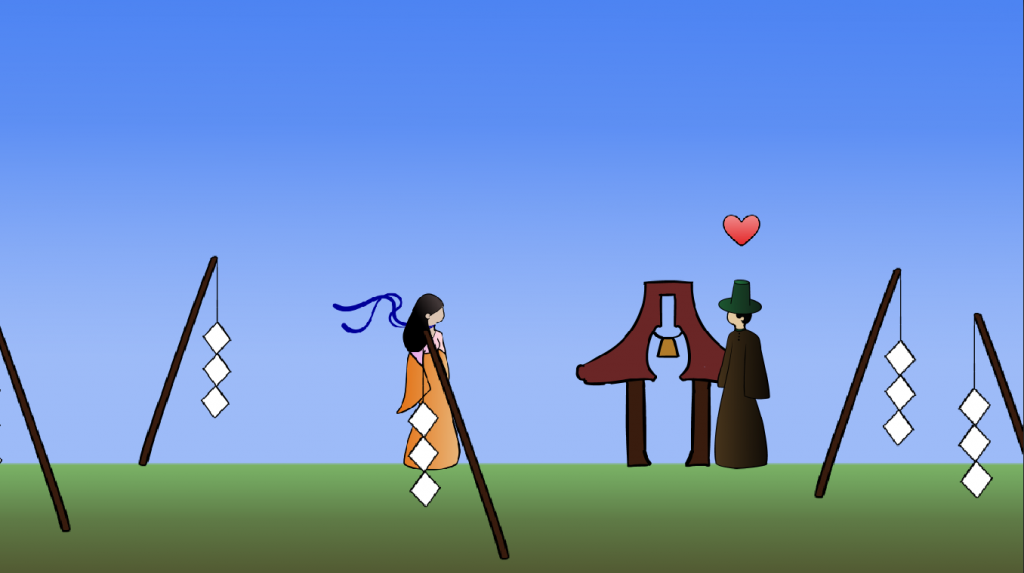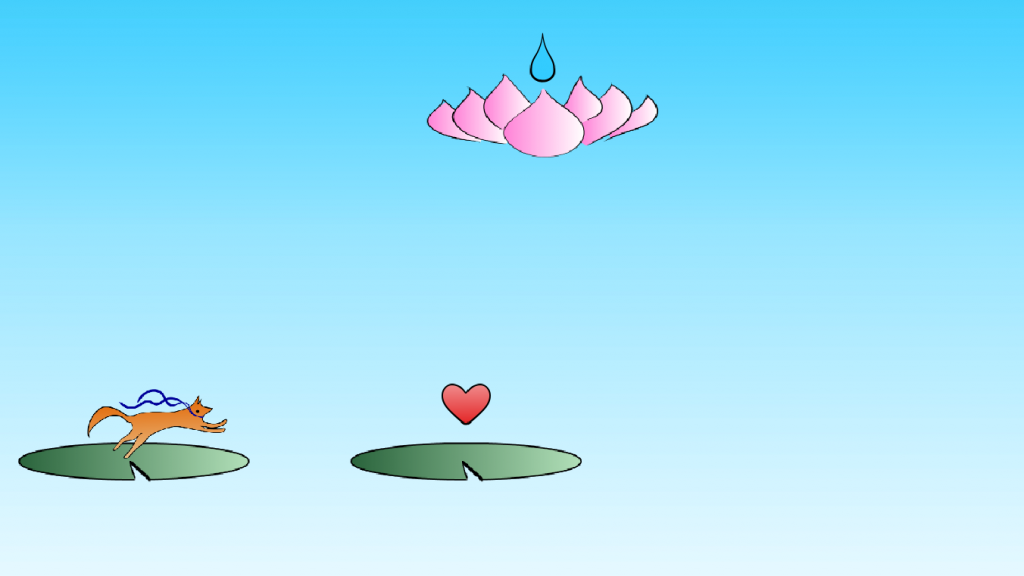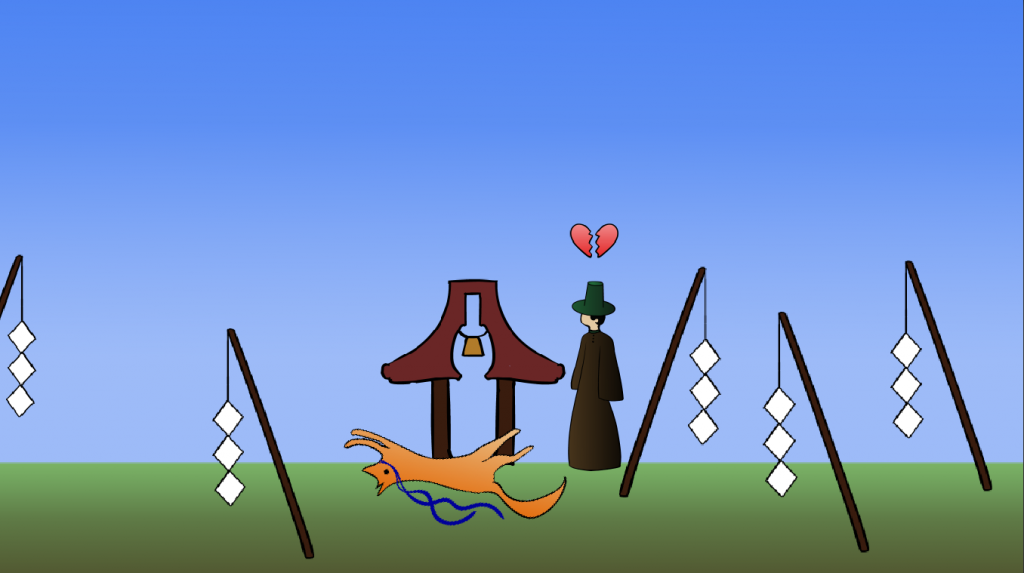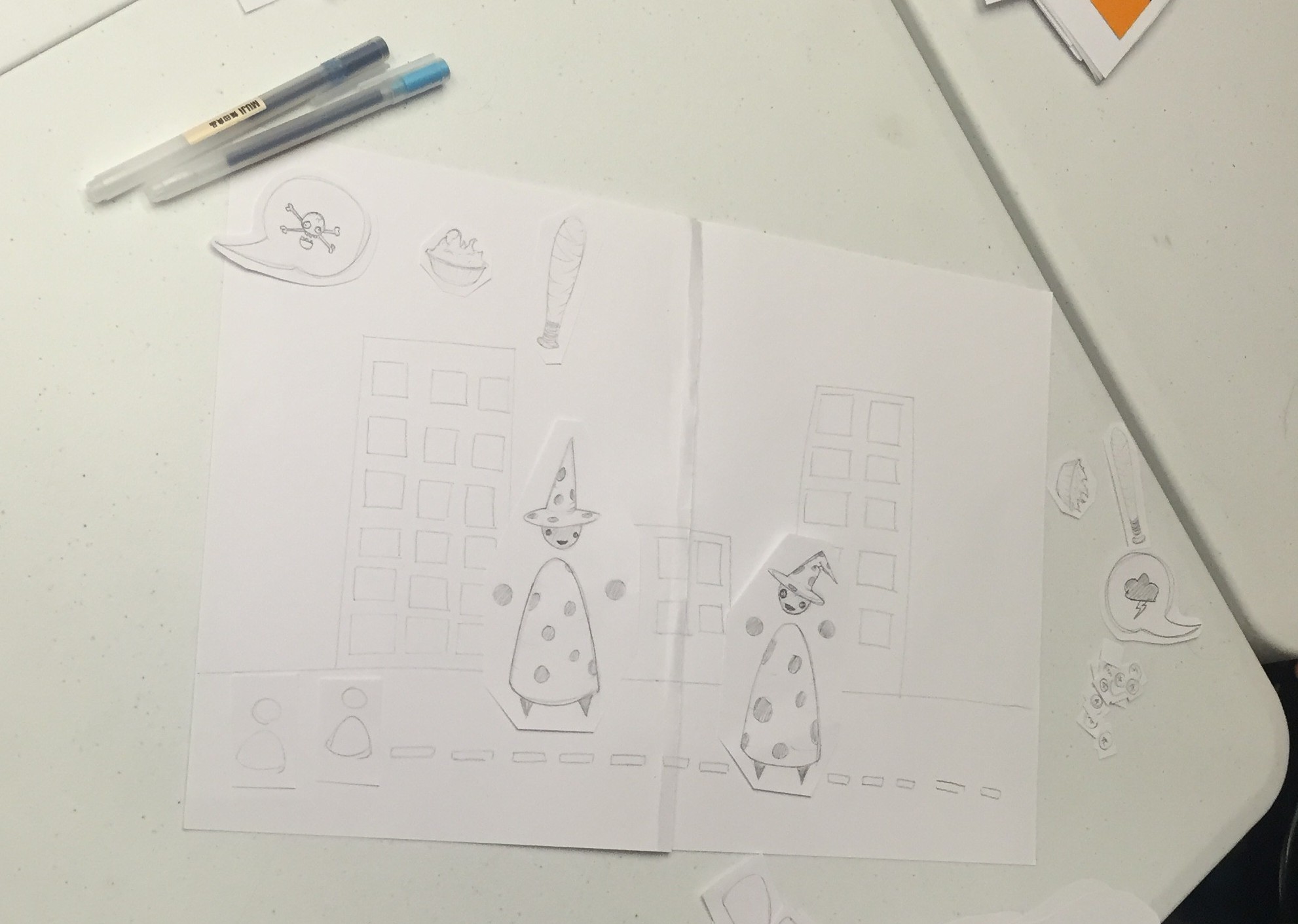Getting Gumiho to its current state has taken a lot of work! Maybe a bit more than I expected! But it’s been very rewarding to see the game slowly take form. I still haven’t finished the game, but I have implemented all of the major scenes in at least a rudimentary form.
The Gumiho title screen. I wanted a font that was elegant but unpretentious.
One of the biggest challenges of creating Gumiho has been learning all the skills and tools necessary to realize my vision for the game. Creating the game involved work in Animate, Photoshop, Unity (and Unity C#), Audacity, and Garage Band, all tools I was completely unfamiliar with before starting the project. Learning to produce the results I wanted using these tools and my rudimentary art, coding, and sound design skills has proven to be quite challenging and has involved a lot of trial, error, and reference to tutorials.
Gumiho’s first scene. The environment in this scene ended up changing quite a bit from the paper prototype. Ultimately, I felt as though the “shrine” setting fit the narrative better than the more mundane rural setting that I had originally planned on using, and created some interesting ambiguity in the relationship between the PC (left) and the NPC (right).
Creating the art assets was one of the most time consuming aspects of the process. Most of the art was created using flash, and it took me some time to figure out how to achieve the aesthetic I was aiming for within the program. Ultimately I’m fairly happy with what I achieved, although the majority of the sprites, with the exception of the PC in the first scene, are currently lacking animation. Although the PC’s animation is functional, it lacks the fluidity I was hoping to achieve.
The game’s platforming sequence. I had some difficulty with this scene. I knew how I wanted to present the narrative through gameplay, but I couldn’t figure out what the platforms should look like. Ultimately, I decided to borrow from Buddhist symbolism. The lotus flowers, representing the potential for an individual to attain purity despite murky surroundings, felt like an appropriate visual accompaniment to the teardrops that lead to the “PC death” ending.
Unlike the opening scene, which proved to be fairly straightforward to code and was primarily challenging from a visual perspective, the platforming sequence was something of a technical challenge. Originally, my intention was to make the heart and tear holding platforms spawn in “sets,” with the higher platform being smaller and holding a teardrop, while the lower platform was larger and held a heart. The platforms were to be placed at varying heights. This design proved difficult to implement, and I eventually settled on a simpler solution in which most of the platforms spawn at a fixed height close the the bottom of the screen, and the tear platforms spawn at a second fixed height close to the top. They no longer spawn in sets, and the rate of occurrence is simply randomized based on a variable the determines how often they will spawn.
The first time the player kills the NPC, as evidenced by the single filled in heart in the tracker in the upper left. This scene loads after the player has collected enough hearts in the platforming sequence.
The “PC death” ending. Art not final.
Overall I’m fairly happy with the state of Gumiho, although it will be difficult to know to what degree I succeeded in achieving my original goals for the game until I’ve successfully linked up all the scenes (some lingering issues remain with the code that controls fading from one scene to the next) and tested it on fresh players who are unfamiliar with the narrative. The project has proven to be quite challenging in almost all aspects, but I feel like I’ve learned a lot and can’t wait to finish this game and move on to the next one! Thanks to all my classmates for providing great feedback on my game throughout the development process, and to Angela for teaching such an amazing class!







